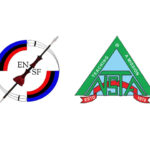Hon’ble Supreme Court judgment upholding the abrogation of Article 370 of the Constitution of India and its legal impact on Article 371A and implications upon the ongoing political negotiations
A judgment having far-reaching legal as well as political impact, the Hon’ble Supreme Court of India by a five bench constitutional bench through a unanimous decision delivered on 11-12-2023, had uphold the declaration of the President of India on 19-08-2019 in exercise of power under Article 370 (3) that the special status of the state of Jammu and Kashmir as provided under Article 370 ceased to be operative, Article 370 was abrogated and the state was bifurcated into two union territories by the Jammu and Kashmir Reorganization Act, 2019.. Article 370 was a temporary provision and which provides that the state of Jammu and Kashmir was allowed to have its own Constitution, flag, its own definition of permanent residents, the right to bar outsiders from holding property; and the privilege of not having an Indian law automatically applicable to its territory. Indian laws had to be specifically permitted by its Assembly before it could operate in J & K.
It was allowed to have its own Penal and Criminal Procedure Codes. The President was empowered to notify, from time to time, the provisions of the Constitution of India that could be extended to the State, with or without modifications etc. It is all now history with the abrogation of Article 370 and the recent judgment of the Hon’ble Supreme Court. The judgment of the Apex Court has vindicated the statement of the Hon’ble Home Minister in Parliament that India is a nation of one Constitution and one flag. The Hon’ble Prime Minister in his article after the judgment had invoked the principle of Ek Bharat Shreshtha Bharat. It may have far-reaching consequences in future with regard to the concept of asymmetric federalism as enshrined in the Constitution of India under Part XXI. Temporary, Transitional and Special Provisions and specifically Article 371A that is with regard to Special Provision to the State of Nagaland and serious political implications to the protracted political negotiations.
Nations are described as federal or unitary depending on the way in which governance is organized. In a unitary set-up, the center has plenary powers of administration and legislation with its constituent units having little authority. In a federal arrangement, the constituent units are identified on the basis of region or ethnicity, and conferred varying forms of authority or some level of administrative and legislative powers. Federalism is a system of government in which power have been divided between the center and the states. The concept of shared sovereignty is an element of federalism. It is an institutional mechanism to accommodate mainly two sets of politics, one at the central or national level and the second at the state level and recently the third, that is at the Panchayat and Municipal level.
In USA the states were independent and sovereign in their territories and declared to formed a federation. Their territories cannot be altered by the federal government, the states have their own constitutions and flags, residuary powers vested with the states etc. In India, Parliament have the power to admit new states, create new states, alter their boundaries etc. The existence of several provisions of the Constitution that allow the center to override the powers of the states. The residuary powers are vested upon parliament. In fiscal matters, the power to raise their own resources is limited, and there is a good deal of dependency on the center for financial assistance. Even though the states are sovereign in their prescribed legislative field, and their executive power is co-extensive with the legislative power, it is clear that the powers of states are no co-ordinate with the union. This is why India is often described as a quasi federal.
The main focus of administration units in India are the center and the states. But there are other forms too, all set up to address specific local, unique historical and geographical contexts. This creates a notable asymmetry in the way Indian federalism works. Symmetric federalism refers to a federal system of government in which each constituent states possesses equal power. In a symmetric federalism, no distinction is made between constituent states. This is in contrast to asymmetric federalism, where distinction is made between constituent states. India with such diversity and plurality, ethnicities and religions, calls for an arrangement that can pave the way for accommodation and integration reflected in the existing asymmetrical federalism. Indian model of asymmetrical federalism is based on the principles of weighted and differentiated equality. This principle calls for equal treatment of all states while being mindful that some states are more equal and unequal than others. The capacities to accommodate various social groups, recognizing distinctive cultural, ethnic differences yet complimentary identities, recognizing and addressing different political aspirations and their unique interests, permitting self-rule within the scheme of shared rule to territorially concentrated minorities etc. are some important characteristics of asymmetric federalism. Such functioning pertains to de facto and de jure asymmetry, where the former is abundant while the latter is limited and maintaining a balance of power of government in which the center and the states works together to achieve common goals. There is also a distinction between political asymmetry and constitutional asymmetry. The territorial and demographic sizes of the constituent units and the constitutional extension of legislative and executive powers to the constituent units.
The foremost examples of asymmetric federalism are the erstwhile Article 370 and Article 371A as enshrined under Part XXI of the Constitution of India. Some of the important highlights of the recent judgment of the Apex Court relevant for the Naga people are:
- The State of J & K does not retain any element of sovereignty after the execution of the Instrument of Accession and the issuance of the Proclamation dated 25-11-1949by which the Constitution of India was adopted. The State of J & K does not have internal sovereignty which is distinguishable from the powers and privileges enjoyed by other states in the country. Article 370 was a feature of asymmetric federalism and not sovereignty (Emphasize by the writer).
- The President in exercise of power under Article 370(3) can unilaterally issue Notification that Article 370 ceases to exist. The President did not have to secure the concurrence of the Government of the State or Union Government acting on behalf of the State Government.
III. The Constitution of India is a complete code for constitutional governance. Following the application of Constitution of India in its entirety to the state of J & K, the Constitution of the State of J & K is inoperative and is declared to have become redundant.
The probable future legal impact of the recent judgement of the Apex Court with due respect to the Hon’ble Supreme Court is that the upholding and giving legal sanction to the abrogation of one set of temporary, transitional and special provision as provided under Part XXI of the Constitution without the consent of the concern State/stakeholders has opened the scope for arbitrary abrogation/review of other similar special provisions including Article 371A without the prior consent of the affected state(s) in future. Article 371A is a special provision and whereas Article 370 was only temporary, transient provision. However, the apprehension is that the procedure already adopted and which is now a settled legal precedent may apply in future for abrogation/review of the other constitutional provisions under Part XXI. It is humbly suggested that the state government should take immediate appropriate steps and obtain a written guarantee that the government of India shall not abrogate/review Article 371A without the prior concurrence from the people of Nagaland subject to a political agreement. Also, the Hon’ble Supreme Court by implication endorsed the concept of one people, one constitution and one flag for India. The immediate constitutional and political questions for the Naga people are:
A. What shall be the status of Article 371A in future subject to political agreement?
B. Since the stand of the government of India is that India is a country of One Nation, One Constitution and One flag as endorsed by the recent judgment of the Hon’ble Supreme Court, what should be the stand of the Naga people on our just demand to recognize Naga constitution and flag?
C. Whether the proposed shared sovereignty in the ongoing political negotiations is only asymmetric federalism as provided in the Constitution of India or it is something more substantial in nature?
D. Whether any element of sovereignty is reserved for the Naga people in the ongoing political negotiation?
These questions require serious deliberations for the protection and preservation of our rights and identity as a people and towards an honorable and acceptable political solution for the Naga people.
Taka Masa Ao
Senior Advocate & Ex. MLA



